
Explore the History of Yiddish Theater In NYC With The Museum Of The City Of New York
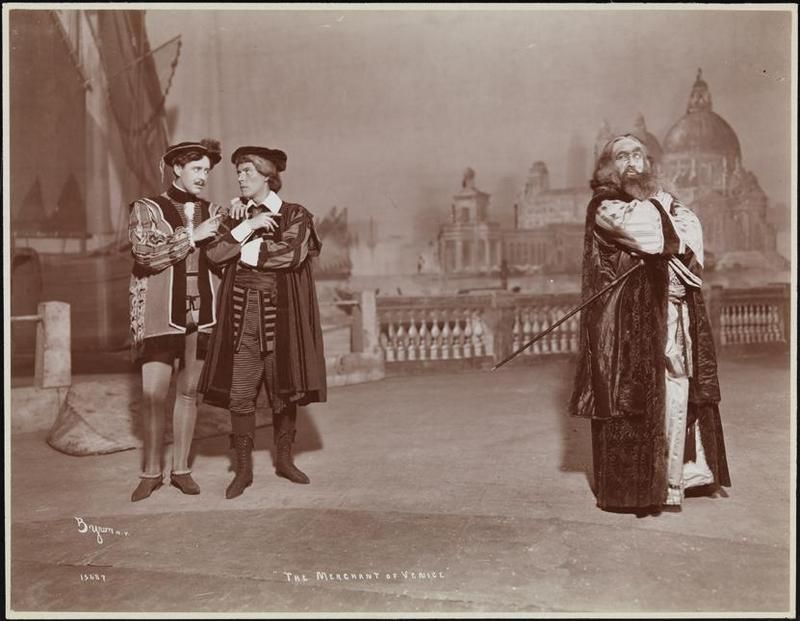
Jacob P. Adler as Shylock in The Merchant of Venice, 1903. Image from Museum of the City of New York
On Wednesday March 9, 2016, the Museum of the City of New York opened the new exhibit New York’s Yiddish Theater: From Bowery to Broadway curated by Professor Edna Nahshon. The exhibit is a lively and colorful compilation of the history of Yiddish theater in New York City, featuring costumes, film clips, posters, playbills, and photographs.
Most New Yorkers may not be familiar with Yiddish theater, but whatever knowledge you may possess on the subject can only be enhanced by this exhibit. It outlines its deep history, starting with Abraham Goldfaden, the Father of Yiddish Theater, and Juilius Butansky, revered as the “Yiddish Shakespeare” whose plays were the first ones to be translated from Yiddish into English.
Yiddish Theater began in Manhattan’s Lower East Side in the late 19th century. The two men represented above were notable individuals who helped establish it, but it is important to note that this genre of theater was built by the immigrant Jews coming in from Eastern Europe. Between 1881 and 1925 alone, nearly three millions Jews immigrated to the United States.
The Lower East Side was notoriously crowded with substandard living arrangements and sweatshops. Yet, despite those odds, the Jewish community began to create theatrical troupes that were focused more on the emotional connection the stage could provide audiences with rather than worrying about writing. When Jacob Cordin immigrated from Russia in 1891, he changed the genre around by getting the actors to stop ad-libbing and focus on the writing.
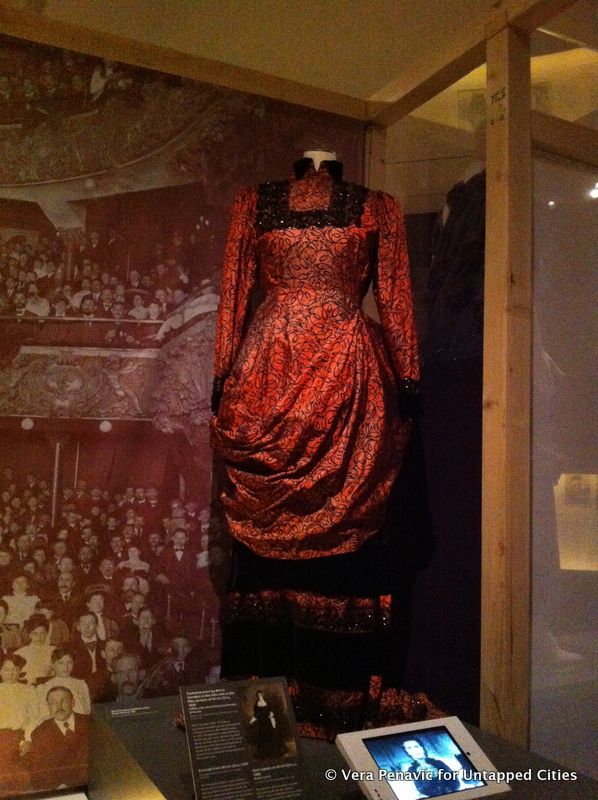
Costume worn by Berta Gersten in film version of “Mirele Efros,” 1939.
Yiddish Theater began to transform itself, with new theaters opening throughout the Bowery which held performances catering to all the different ethnic groups living in the area. Vaudeville also started to become popular. The exhibit then continues on a kind of road map of the transformation of Yiddish Theater in the city.

The Grand Street Theatre, the first construction of one specifically for Yiddish productions, 1905. Image from Museum of the City of New York
It touches on the early performers and troupes that started making names for themselves, featuring a spotlight on the Adler family. Today, it’s one of the most familiar names in acting as the Stella Adler Studio of Acting. Stella was the daughter of famous Yiddish tragedian, Jacob Adler and actress Sarah Adler.
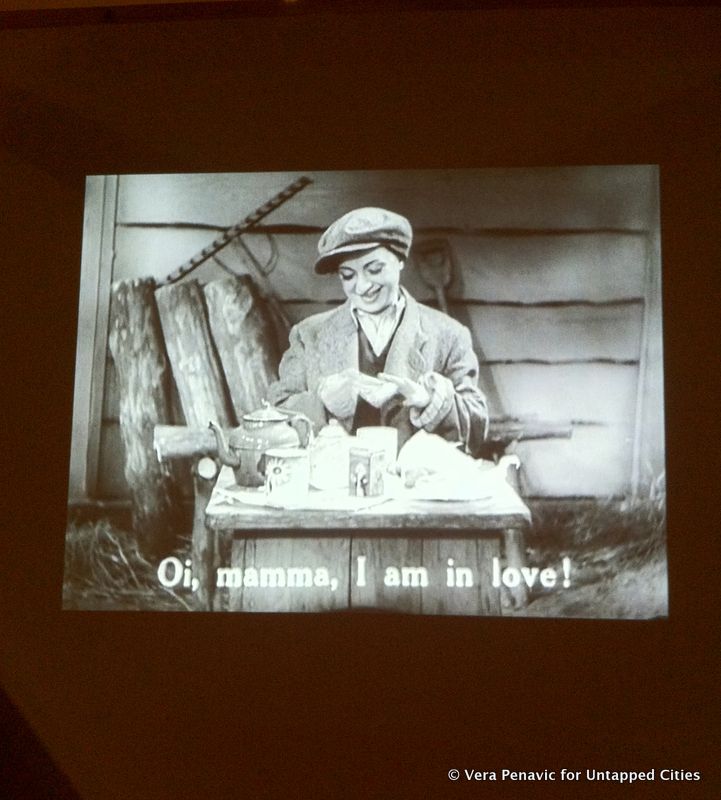
The exhibit features film clips of various theatrical performances.
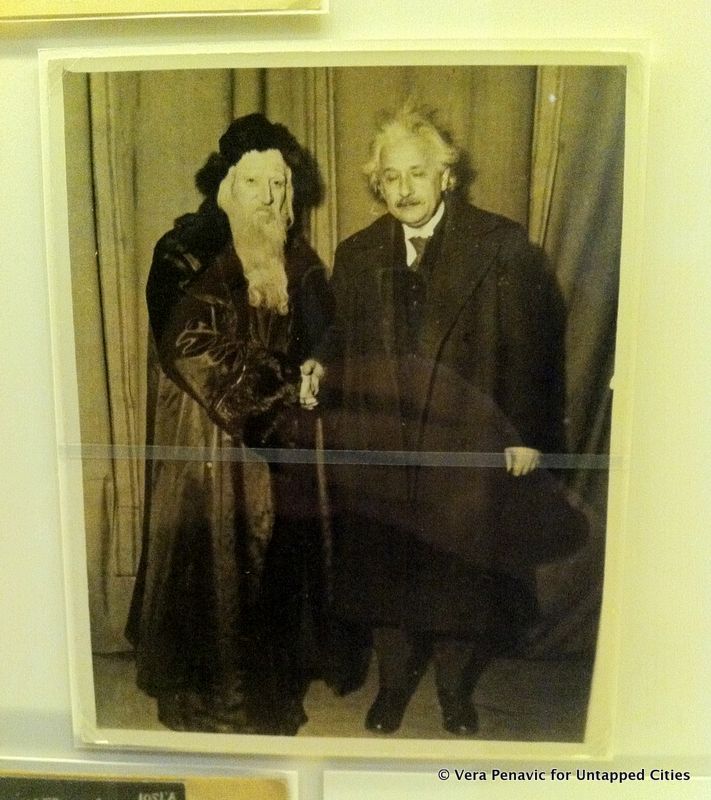
Yiddish Theater was so popular in NYC even celebrities came to watch it. Maurice Schwartz as the Rabi of Neshev (left) with Albert Einstein, 1934.
As popularity increased and living conditions got better, the Jewish population of the Lower East Side shifted upwards above Houston to the East Village where the Yiddish Theaters also moved to. Actors spotlighted in the exhibit are Molly Picon and Boris & Bessie Thomashefsky as the big names on Second Avenue.
But actors are not the only ones who help transform theater. The exhibit also honors the artists and designers who helped build the sets, create the costumes, and set the stages. It features the designs of Boris Aronson, Mordecai Gorelik, Same Leve, amongst others.
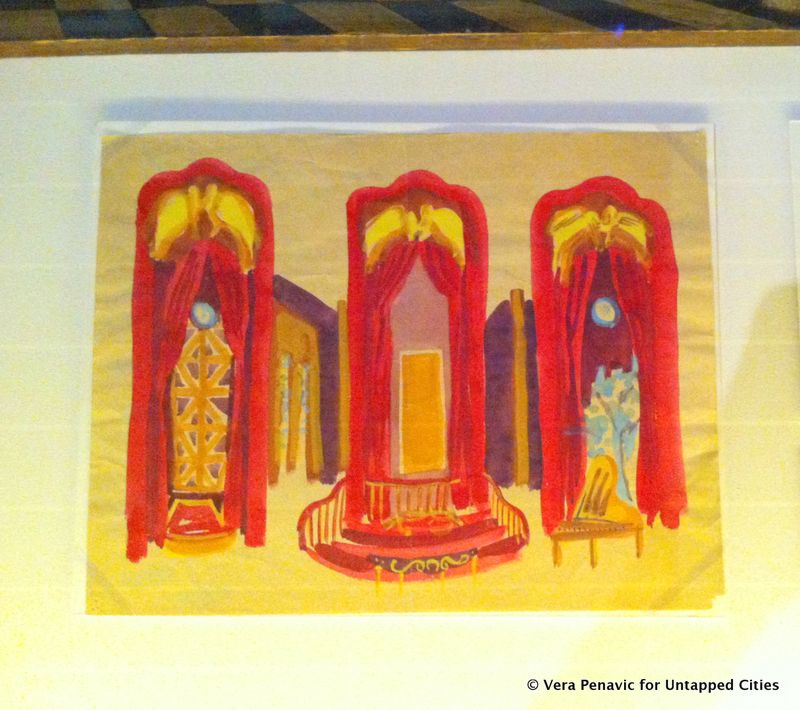
Mordecai Gorelik stage design for “God, Man, and the Devil (Got, mentsh un teyvl),” Act II, 1928.
As the political climate shifted after World War I, a part of Yiddish theater seemed to go with it. The next part features a section on Political Theater from the 1920s to 1930s, and the influence of communism. One particular theater company, the Artef (Workers’ Theatrical Alliance), was a quasi-professional communist group grounded in the Yiddish left’s commitment to high culture. Eventually, when they moved to midtown, the company redefined itself as a “people’s theater” with more “folkish” plays.

Souvenir program of “Miracle of the Warsaw Ghetto (Der nes in geto),” New Jewish Folk Theatre, 1944.
The exhibit even goes on to explore Yiddish Theater in the Catskills. A growing number of Jews started to move out of the city and into the countryside of upstate New York in the early 1960s. Yiddish Theater continued to thrive in the communities they established, especially because of the most famous Yiddish influenced plays on Broadway.
The last section of the exhibit is titled The Changing World of Yiddish Theater. With the falling number of Yiddish speakers, the theater genre had to adapt with audiences who preferred to hear English on stage. The numbers of plays written and performed in Yiddish dramatically decreased in the post World War II era, but its influence lived on.
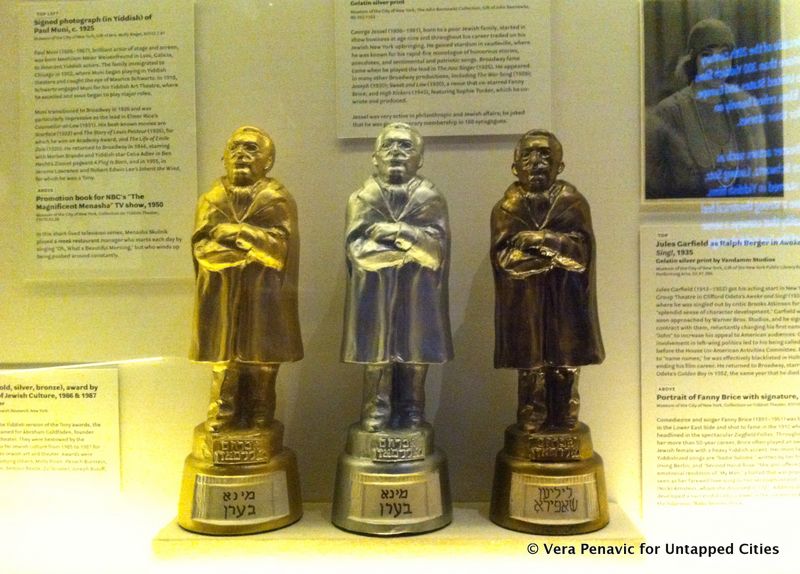
“Goldies” wards, the Yiddish version of the Tony awards, 1986 & 1987.
Given its early establishment into the lives of New Yorkers in the late 19th century, the impact Yiddish Theater left can still be felt today. There are two featured spotlights, the 1964 musicals Fiddler on the Roof and Funny Girl with Barbra Streisand, with the exhibit even showcasing costumes and playbills from the original productions.
Yiddish Theater is no longer one the important theatrical institutions for American Jews, but this exhibit helps reinvigorate the history probably not known to many people. Comprehensive and lively, this exhibit shows the roots of the Yiddish stage and how it came to influence New York theater even today.
The exhibit displays a collection of over 250 artifacts drawn from multiple collections and archives. It will run at the Museum of the City of New York until July 31, 2016.
Next check out 17 Historical Theaters in NYC’s Times Square and our tour of the Off-Limits Bialystoker Synagogue and the Lower East Side .

